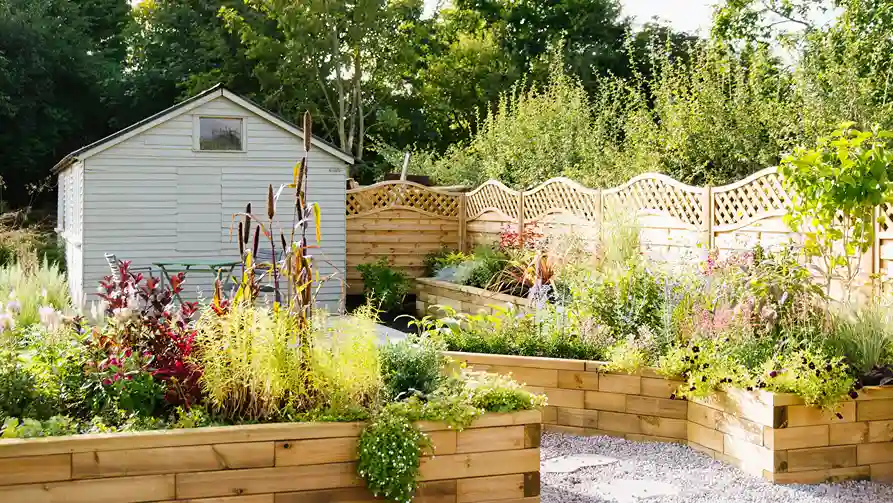There’s something magical about stepping into a backyard oasis, where the hustle and bustle of the world fades away, and nature’s beauty takes center stage. In this guide, we’ll explore the art of creating a low-maintenance garden, where serenity meets simplicity.
Assessing Your Space
Before you dig in, take a moment to understand your outdoor canvas. Consider your climate, soil type, and sun exposure. Assess existing plants and structures to work with what you have while planning for a harmonious transformation.
Designing for Low Maintenance
The key to a low-maintenance garden lies in smart design choices. Opt for native and drought-tolerant plants that thrive in your environment. Embrace efficient irrigation systems, hardscaping elements, and mulching to minimize upkeep without compromising on beauty.
Plant Selection and Placement
Choose plants wisely, focusing on resilient varieties that require minimal care. Aim for a balanced mix of textures and colors to create visual interest year-round. Group plants according to their water needs and growth habits to simplify maintenance tasks.
Simplifying Maintenance Tasks
Streamline your gardening routine with proactive strategies. Implement weed control methods, prune judiciously, and mulch generously to reduce time spent on upkeep. Fertilize and amend soil as needed to promote healthy growth without constant intervention.
Sustainable Practices
Embrace eco-friendly gardening practices to nurture both your garden and the environment. Compost garden waste, attract beneficial insects, and opt for organic pest control methods to create a thriving ecosystem in your backyard sanctuary.
Creating a Relaxing Outdoor Space
Beyond functionality, focus on creating a space that beckons you to linger and unwind. Design seating areas, pathways, and focal points like water features to invite relaxation. Enhance ambiance with lighting and decorative touches for evenings spent under the stars.
Monitoring and Adjusting
Stay attuned to your garden’s needs, adjusting your approach as necessary. Embrace flexibility and seek inspiration from local resources and fellow gardeners. Remember, the journey of cultivating a low-maintenance garden is as rewarding as the destination.
Final Words
In the hustle of modern life, a low-maintenance garden offers a sanctuary of peace and tranquility. By embracing thoughtful design, sustainable practices, and a touch of creativity, you can create a backyard retreat that nourishes the soul while requiring minimal upkeep.
FAQ’s
How much time and effort does it take to maintain a low-maintenance garden?
Maintaining a low-maintenance garden typically requires significantly less time and effort compared to traditional gardens. With smart design choices and proactive strategies, you can enjoy a beautiful outdoor space with minimal upkeep.
What types of plants are suitable for a low-maintenance garden?
Opt for native and drought-tolerant plants that are well-adapted to your local climate and soil conditions. These resilient varieties require less water and care, allowing you to enjoy a thriving garden with less maintenance.
Can I still enjoy colorful blooms and lush foliage in a low-maintenance garden?
Absolutely! By carefully selecting plants with a variety of textures and colors, you can create a visually stunning garden that offers year-round interest without constant upkeep. Grouping plants according to their water needs and growth habits further simplifies maintenance tasks.
Are there eco-friendly practices I can incorporate into my low-maintenance garden?
Yes, sustainable gardening practices go hand in hand with low-maintenance principles. Composting garden waste, attracting beneficial insects, and using organic pest control methods not only reduce environmental impact but also promote a healthy ecosystem in your garden.
How can I ensure my low-maintenance garden remains a relaxing outdoor retreat?
Design your garden with relaxation in mind, incorporating seating areas, pathways, and features like water elements to create a tranquil atmosphere. Regular monitoring and adjustments, along with flexibility and inspiration from local resources, will help maintain the peaceful ambiance of your outdoor sanctuary.
